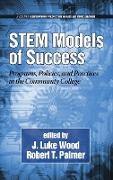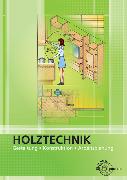Stem Models of Success
BücherAngebote / Angebote:
A volume in Contemporary Perspectives in Race and Ethnic Relations
Series Editors:M. Christopher Brown II, Alcorn State University
and T. Elon Dancy II, University of Oklahoma
As the U.S. focuses on positioning itself to retain and advance its status as a world leader in technology and scientific
innovation, a recognition that community colleges are a critical site for intervention has become apparent. Community colleges serve the lion's share of the nation's
postsecondary students. In fact, 40% of all undergraduate students are enrolled in community colleges, these students account for nearly 30% of all STEM undergraduate
majors in postsecondary institutions. These students serve as a core element of the STEM pipeline into four-year colleges and universities via the community college
transfer function. Moreover, community colleges are the primary postsecondary access point for non-traditional students, including students of color, first-generation,
low-income, and adult students. This is a particularly salient point given that these populations are sordidly underrepresented among STEM graduates and in the STEM
workforce.
Increasing success among these populations can contribute significantly to advancing the nation's interests in STEM. As such, the community college is situated as an
important site for innovative practices that have strong implications for bolstering the nation's production and sustenance of a STEM labor force. In recognition of this
role, the National Science Foundation and private funding agencies have invested millions of dollars into research and programs designed to bolster the STEM pipeline.
From this funding and other independently sponsored inquiry, promising programs, initiatives, and research recommendations have been identified.
These efforts hold great promise for change, with the potential to transform the education and outcome of STEM students at all levels.
This important book discusses many of these promising programs, initiatives, and research-based recommendations
that can impact the success of STEM students in the community college. This compilation is timely, on the national
landscape, as the federal government has placed increasing importance on improving STEM degree production as a
strategy for America's future stability in an increasingly competitive global marketplace. Informed by research and
theory, each chapter in this volume blazes new territory in articulating how community colleges can advance
outcomes for students in STEM, particularly those from historically underrepresented and underserved
communities.
Folgt in ca. 15 Arbeitstagen




